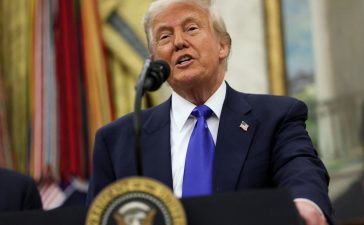Summary
- PRC imposing export controls on aerospace & shipbuilding molds for national security reasons.
- Ultra-high molecular weight polyethylene fiber-related items included in the new export ban.
- Export controls indication of PRC’s industrial progress, original work, and need for protection against competitors.
The People’s Republic of China is increasing export controls on its aerospace and shipbuilding industries. The export controls will take effect on July 1 and are focused on molds and ultra-high-molecular-weight polyethylene-related items.
The People’s Republic of China (PRC) Communist government on May 30 announced a new export ban via a joint statement of the Ministry of Commerce, the General Administration of Customs, and the Equipment Development Department of the Central Military Commission, shared by the Information Office of the Ministry of Commerce. According to a Google translation of the original statement, the export ban included software and equipment, “Such as molds in the aerospace and shipbuilding fields, and ultra-high molecular weight polyethylene fiber-related items”.
The reasoning, according to the statement, is for national security reasons. The statement also empathized that the PRC has concerns about its exports harming the PRC’s security or development interests.
But why would the PRC ban mold and ultra-high molecular weight polyethylene fiber-related items? Also, what are ultra-high molecular weight polyethylene fiber-related items? We look.
What is ultra-high molecular weight polyethylene fiber?
According to Curbell Plastics, a New York State plastics manufacturer, ultra-high molecular weight polyethylene fiber is, “an extremely tough plastic with high abrasion and wear resistance.” This is relevant to PRC aviation as COMAC, the primary PRC airplane manufacturer, is using composites.

Composite Materials Will Account For More Than Half Of the COMAC C929’s Main Structure
COMAC is steadily increasing the proportion of composite materials used in its aircraft programs.
But this is not the only item facing new PRC export controls, starting July 1.
Export controls sign of progress and stress
As the PRC develops its aviation industry, the new export bans are arguably a sign of industrial progress in industry development and original work. The PRC is now originally designing and manufacturing aircraft for its own markets to the point of standing up its own research facilities. One of these facilities is the COMAC Beijing Aircraft Technology Research Institute.
Photo: N509FZ | Wikimedia Commons
According to a Google translation of the COMAC Beijing Aircraft Technology Research Institute’s website, the institute works on not just aerodynamics and avionics but also, “advanced structural integration… as well as additive manufacturing, artificial intelligence, and new technology exploration and application.”
So by adding export bans to sensitive domestic industrial products, the PRC is protecting the PRC’s own work product so to speak. One should remember that the PRC’s export bans extend to some equipment and software in the aerospace industry. According to the South China Morning Post,
“According to data from the Chinese customs, the United States, Germany and Saudi Arabia were the top-three importers of products falling into the category of “aircraft, spacecraft and parts thereof” from China during the first four months of this year.”
It is no secret that the United States of America (USA) considers Germany and Saudi Arabia allies. Furthermore, the USA considers the PRC a pacing threat thanks to its escalating conduct around Taiwan and the China Seas. In fact, the latest USA’s National Defense Strategy in 2022 stated;
“PRC efforts and activities to contest the rules-based international order make it the pacing challenge for the Department [of Defense].”
As such, tensions between the two nations are increasing. This is increased by the PRC’s starting to manufacture not just commercial jetliners but also improving the quality of domestically designed and built fighter aircraft like the Chengdu J-20.

Mighty Dragon: The Chengdu J-20 Chinese Fighter Jet’s Capabilities
Multiple prototypes were tested before it entered into active service.
Obviously, the USA has export controls to attempt to protect her own inventions and materials from being used against her. Sometimes these are successful, and sometimes not.
Bottom line
Again, the PRC imposes export restrictions to protect the Communist nation’s perception of sovereignty. Additionally, the PRC wants to prevent competitors from reverse engineering her domestic inventions as her aviation and shipbuilding industries grow.
What are your take-aways? Please share in the comments.











